Shapes
Overview
Shapes are the core element of Shapez 2. They can be extracted, cut, painted, etc.
Each Shape is composed of layers, each layer is composed of parts and each part has a type and a color. In regular Scenarios, layers contain 4 parts and in the hexagonal scenario, they contain 6. In the insane scenario, shapes can have between 1 and 5 layers, and between 1 and 4 in other scenarios.
Part Types
| Visual | Name | Code | Can have color |
|---|---|---|---|
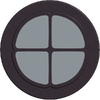 |
Circle | C | Yes |
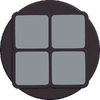 |
Square | R | Yes |
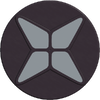 |
Star | S | Yes |
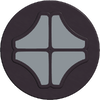 |
Diamond | W | Yes |
| Visual | Name | Code | Can have color |
|---|---|---|---|
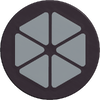 |
Hexagon | H | Yes |
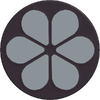 |
Flower | F | Yes |
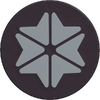 |
Gear | G | Yes |
| Visual | Name | Code | Can have color |
|---|---|---|---|
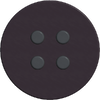 |
Pin | P | No |
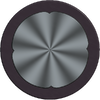 |
Crystal | c | Yes |
| / | Empty | - | No |
Colors
| Visual | Name | Code |
|---|---|---|
 |
Uncolored | u |
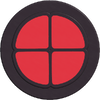 |
Red | r |
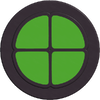 |
Green | g |
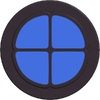 |
Blue | b |
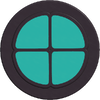 |
Cyan | c |
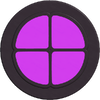 |
Magenta | m |
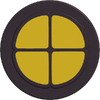 |
Yellow | y |
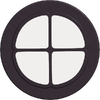 |
White | w |
Shape Codes
Shapes can be represented by Shape Codes. They are strings of characters, making them easily transferable, it being from one place to another ingame, or outside of the game.
Each layer is listed from bottom to top and separated by colons (:) and each part in the layer is composed of two characters, the first being the shape type and the second the color. All parts in a layer are then put next to each other starting from the top right part then going clockwise without a separation character.
The character codes for shape types and colors can be found in the 'Code' column in the above tables. For shape types that are marked as 'can have color', the color character will be one of the color character in the above table, otherwise it will be -.
Shape Viewer
The shape viewer allows you to view shapes in 3D and to change the view angle, as well as multiple options for spacing out quadrants and/or layers. It can be accessed by clicking a shape anywhere in the UI.
Different Numbers of Parts per Layer and More Layers
Shapes with a different number of parts per layer and/or more layers than what the current Scenario is made for are somewhat supported by the game. All layers in a shape must have the same number of parts, however. They can be inputted and seen in the shape viewer, map markers' shape and shape blueprint icons.
Using external tools, they can appear on belts and wires. All buildings work fine with them as long as buildings with multiple inputs don't receive shapes with differing numbers of parts per layer.
Shape Gravity Rules
Shapes have gravity rules. Contrary to Shapez 1, floating layers/pieces can't exist in Shapez 2.
These rules are applied after any operation that could generate floating pieces.
Definitions
Shape parts are considered connected horizontally if they are directly next to each other (diagonals/corners don't count) and if both of them aren't a pin.
A shape part is considered supported if:
- it's on the bottom layer of the shape
- or it's directly above a supported part
- or it's connected horizontally with a supported part
- or it's a crystal and it's directly under a supported crystal
Process
For each layer starting from the bottom and going up, the layer is split into groups of horizontally connected parts. Then for each group, if not all parts are supported, the group begins falling, thus all crystals inside the group get destroyed and the group potentially gets split into multiple groups if crystals were connecting regular parts. The groups then fall until at least one of their parts is directly above another part.
Pins
Pins behave similarly to regular shape types, with a few differences. They are generally considered supports in place of gaps, to allow making some shapes that would otherwise have floating pieces. As such, shapes that have pins replacing empty parts that aren't the topmost shape part in their column will be accepted by the Vortex. Conversely, the Vortex will accept shapes that have empty parts replacing pins that aren't the topmost shape part in their column.
Pins are also generated in a special way, via the Pin Pusher.
Pins also don't connect horizontally with shape parts, this means they won't support shape parts horizontally adjacent to them, and will let them fall if they aren't supported by anything else. They will still support shape parts directly above them, however. See also Shape Gravity Rules.
Similarly to empty parts, pins will get replaced by Crystals in the Crystal Generator.
Additionally, pins don't have a color. They will be unchanged when going through a Painter.
Crystals
Crystals behave differently from regular shape types, making them a new challenge when unlocking them. Their rules can be summarized by the fact that crystals are fragile.
They are generated in a special way, via the Crystal Generator.
As a general rule, when a crystal shatters, it shatters all connected crystals as well. Crystals are considered connected when they are either directly adjacent on the same layer (corners/diagonals don't count), or when they are directly above/below each other. Differently colored crystals and/or crystals not created at the same time will still be considered connected if they match the previously stated rules.
A crystal will shatter if it falls. This can happen if it is in the top shape of a Stacker, or if it falls due to gravity in another operation, like in a Cutter for example. Other shape parts can safely fall onto crystals, however.
A crystal will also shatter if it is separated from another connected crystal part. This can happen in a Cutter or Half Destroyer for example.
Spoiler warning : the next example is a solution for how to get pins without anything on top of them in a shape, you might prefer figuring out the solution by yourself first.
This can also happen in a Pin Pusher if a crystal part gets discarded due to the layer limit and it was connected to another crystal part below.
A crystal part can be safely separated from a connected non-crystal shape part, however.
Additionally, crystals can't change color once created. They can still pass through Painters and Crystal Generators, but they will leave unchanged.
